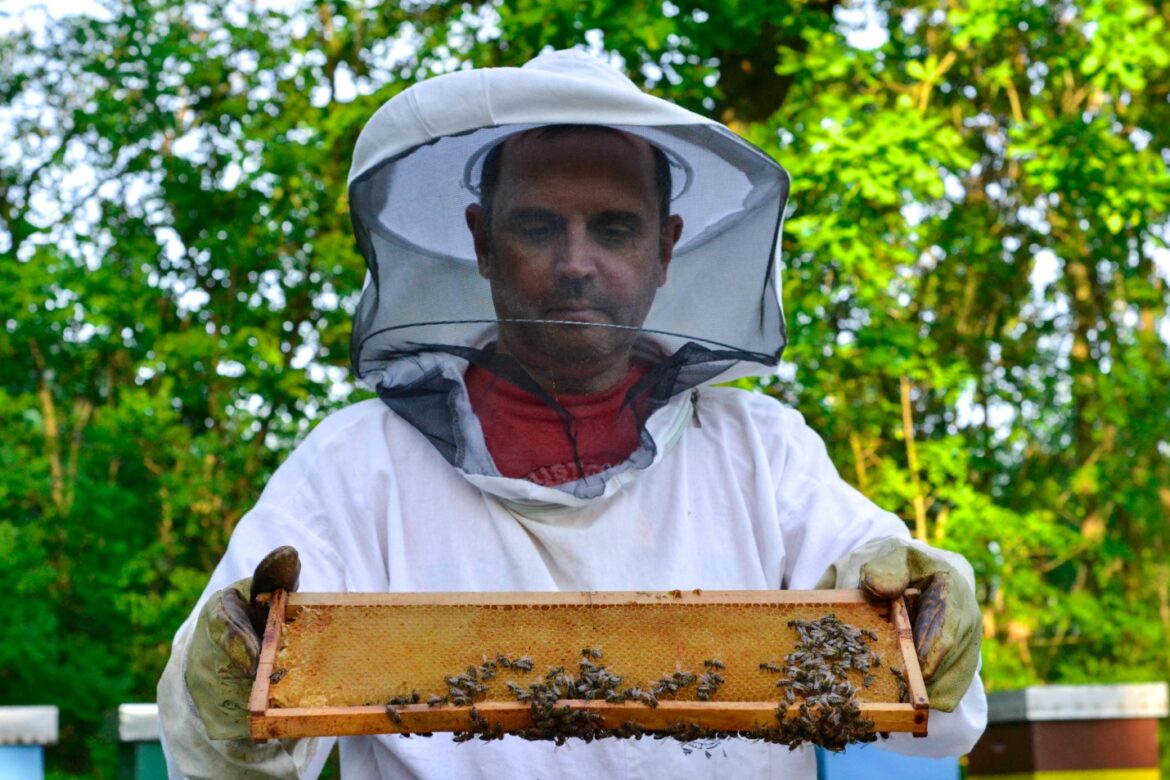All About Honey: Its Types, Production And Health Benefits
Honey is one of the most common ingredients used in most sweet and savory dishes. It usually comes on top of our grocery list, and most people have a bottle (sometimes even more than one bottle) of honey in their house. It is such a popular household item that we all feel like we already know too much about it. What really is there to know about honey, right? We know it’s golden brown, sweet, and comes from bees – what else is there to know?
Well, we are sure that’s how most people think, but today we are here to surprise you. If that’s about all the knowledge you have regarding honey, then you are at the right place. Honey may look like a simple edible, readily available everywhere and a popular, key ingredient in most dishes. But ,in reality, it is much more than that. Honey is actually quite a complex substance; you’ll be shocked to know the amount of work that is put into that one bottle of honey sitting in your kitchen cabinet.
This syrupy sweet liquid is full of secrets and if you want to uncover some interesting facts about honey, you must keep reading. Today, we are discussing all there is to know about honey, from its production to its types to its health benefits. So let’s not waste any more time and get started!
What Really is Honey?
Honey is a sweet liquid made by bees. But like we said above, that’s not all there is to know about honey. Honey is a viscous, syrupy substance made by several kinds of bees, including honey bees, and not just honey bees. It is thin and golden in color but different types of honey can be seen lightly different in color grades. This sugary liquid is said to be achieved from bees, but actually, it originates from plants, more specifically, flowers and their nectar.
The type of flower is basically what determines the color and taste of the different types of honey. Let’s learn more about how honey is produced and how it reaches us.
All About Honey Production: How is Honey Made?
Since we were kids, we have only heard honey bees make honey but how do they do that? Do they produce it from their body or do they all just join hands and manufacture this thing? Well, it’s neither of these situations; honey comes from flower nectar, and bees are merely storage and transporters in this process. Shocked? Don’t be; it’s not like bees don’t play a key role here. They are quite hardworking and still play a vital role in transporting and storing honey.
· Step 1: From Flowers to the Bees
Honey comes from flowers that contain nectar – a sugary liquid that is then collected by bees. Adult worker bees fly over various flowers and obtain nectar. They extract this nectar from the flowers by sucking the flower using their long tube-like tongue, which helps them suck the nectar, which they then store in their stomach, called the honey crop. Here in the honey crop is where bees begin making the honey.
After ingesting the nectar, bees slosh it around and modify the pH, which helps the nectar mix with the enzymes present in the abdomen. This helps transform the chemical composition of the nectar and allows it to break down into simpler sugars, like fructose, which is more suitable for long-term storage and gives honey its sweet taste – later. This whole process takes about 21 days, which the bees spend searching for suitable flowers and collecting the nectar.
Is Honey Really Bee Barf?
As a kid or even growing up, we have all heard this joke that honey is actually bee vomit, which is not entirely a lie. But if you are grossed out by it, you shouldn’t be. Technically, honey is not bee barf because after collecting nectar, bees store it in their special “second” stomach. This stomach – as mentioned, the honey crop, is just honey. So even though they throw it out of their mouth after extracting the nectar, since the nectar never goes into their actual stomach, honey cannot be called bee barf or bee vomit.
· Step 2: From the Bees to the Hive
After returning back to their hives, bees continue their honey-making process. What happens here is that honeybees pass around the nectar to other, younger worker bees by regurgitating the liquid (basically, vomiting it out) into other bees’ mouths. This process continues, from bees to other bees until all the partially digested nectar is deposited into the honeycomb.
Once in the hive or the honeycomb, the honey is a thin viscous liquid – quite the opposite of the thick honey we see on our breakfast tables every day. But this doesn’t involve any technology; this is also another job carried out by the honeybees. To remove the excess moisture from the honey, all the bees together start fanning their winds, which helps speed up the evaporation process and gets rid of extra water.
When about 80% of the water is evaporated from the comb, in order to guarantee the correct conservation of their honey, bees seal the comb – also called cell sealing, using another liquid from their abdomen. This eventually helps harden the beeswax and helps preserve the honey present in the comb for many years to come.
· Step 3: From Honeycomb to Us
The process of making honey ends here but how does honey reach us? Well, this is where beekeepers come into play. Beekeepers harvest the honey by collecting honeycomb frames and scraping off the wax cap created by the bees that sealed off the honey cell by cell.
Once these caps are removed, the fame is paced in an extractor, which is basically a centrifuge. This centrifuge spins the frame and forces the honey out of the comb. Once the beekeepers do the extraction, it is strained to remove unwanted particles and any remaining wax. Sometimes, beekeepers also use heat to quicken this process.
Straining s the last step of bee extraction; once that’s done, all there is left to do is transfer it to a bottle and label it so it can be sold in the market! Now, this is a natural process, but many beekeepers who want to harvest honey place honeybees near flowers and give them time and environment accordingly to obtain honey.

Types of Honey
All the honey present in this word is achieved by the same process mentioned above, so what makes one type of honey different from the other? Remember how we said the type of flower used for nectar plays a key role in honey production?
Well, that’s because the type of flower determines the color and taste of the honey – and each flower helps in producing a different type of honey.
However, sometimes you might find that the honey achieved from the same flower type doesn’t have the same uniform taste. This happens because there are two more factors affecting the consistency in the taste and color of the honey – and these factors are temperature and rainfall level.
Keeping all this in mind, let’s talk about some popular types of honey worldwide.
· Acacia Honey
Acacia honey is one of the most common honey varieties. Made using the nectar extracted from black locust trees, aka false acacia trees, this type of honey is clear and light in color. It has a delicately sweet flavor with a hint of vanilla because it is low in sucrose but high in fructose content. This is one reason it is popular with diabetic people and is known for its anti-inflammatory properties. It is suitable for cooking, baking, and table use.
· Clover Honey
Another widely available honey variety is clover honey, which has the largest annual production. The honey is distributed across the world and is mainly produced in North America (Canada and US), Sweden, and New Zealand.
Clover honey also has a light golden color, a mild taste, and a subtle hint of cinnamon. This honey is considered a classic because it is multi-purpose and is widely used as an ingredient in a variety of dishes and sauces.
· Buckwheat Honey
Contrary to the two varieties of honey discussed above, buckwheat honey is dark and bold in appearance. It is considered the strongest honey in the world and is a great source of many essential nutrients and iron.
As compared to other light-colored varieties, buckwheat honey is also rich in antioxidants. This honey is native to Japan, the USA, France, and the Netherlands and is known for its rich amber color and earthy aroma. Its taste is heartier and stronger, which is why it is preferred in honey cakes, sauces, and bread.
· Eucalyptus Honey
Extracted from flowering eucalyptus trees, this honey is produced in Australia and exported across the world. It is distinct from all other honey varieties as it has a sweet flavor and appears unique with cool undertones as well. The honey has a medicinal scent and is known for its healing properties. It is used to cure cold-like symptoms such as cough, sore throat, and other upper respiratory infections. This honey is perfect for table use as well as cooking and baking.
Benefits of Consuming Honey
Honey has been a major part of our diet forever, there is a reason we all find a bottle of honey in our kitchens, and it is kept aside most of our breakfast dishes – ever thought why? Surely, the unique sweet taste of the edible liquid accounts for its popularity, but one reason why it is endorsed so much by our elders is its amazing and countless health benefits.
Let’s talk about some of them:
· It is Extremely Nutritious
Extracted directly from plants and made with no chemically added preservatives, honey is one of the purest edible items available on the market these days. It is high in nutrients and minerals that can help you fill a gap in your nutrition.
Even though it is pure sugar, it is worth noting that it contains traces of protein, fats, and riboflavin as well. Moreover, it is also rich in the healing-promoting plant compound called polyphenol.
· Great Source of Antioxidants
As mentioned above, honey is a great source of antioxidants – some varieties more than others. Antioxidants are important to help get rid of free radicals from our bodies. These free radicals build up in cells and cause damage in the body, which can contribute to premature aging, heart disease, and type 2 diabetes. However, people consuming honey in their regular diet can avoid these issues.
· It has Amazing Healing Properties
Honey has amazing healing properties; it promotes wound healing and can help with burns. Although this practice is not very common today, it was once a popular method in ancient Egypt to help people with various skin issues earlier. However, even today, honey is recommended to many diabetic patients to help with foot ulcers that may lead to amputation.
· It Helps With Cold Symptoms
As discussed above, honey is a great source of comfort for cold-related symptoms. It can help suppress cough and other respiratory problems. If you have a sore throat, you can have a spoonful of warm honey, and it will ease your pain within minutes. This is one reason why honey ginger tea is the most recommended for patients with cold.
Conclusion
Honey, a common name, is still something most people don’t know much about. It is truly something full of secrets, especially about how it is made. We are sure today, we were able to help you get rid of many misconceptions about the production process of honey, and help you learn new and interesting things about the sweet, edible, syrupy liquid that you must have never heard before!


